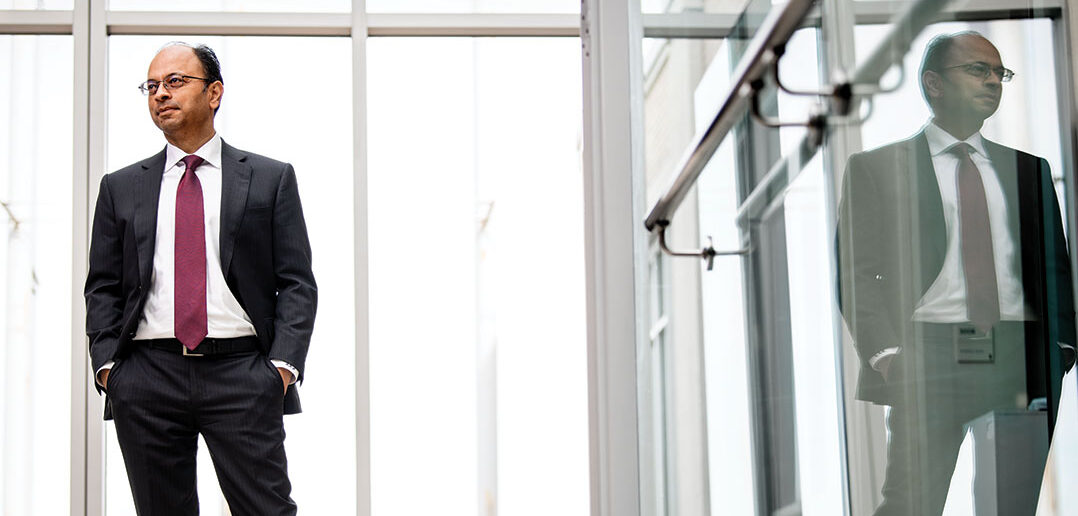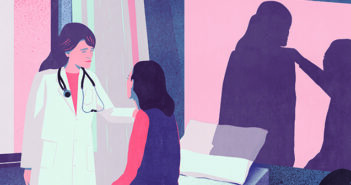Let’s start at the beginning. You’ve said that you knew that you wanted to be a doctor early on.
Yes, part of the influence was clearly my parents, who told me I was going to be a doctor from the earliest moments that I can remember. It was also my uncle—my dad’s younger brother—who was the first physician in the family. He was my inspiration and role model while growing up. Since elementary school, where I developed a fondness for biology, it was clear to me that medicine was my future. It’s very strange to say, but I never had a backup plan. To this day, I find myself thinking, “What if it hadn’t worked out?” Even 50 years later, I still don’t know what else I would be doing.
How did you decide to turn your career toward being a physician-scientist?
I had no knowledge that doctors “did science.” I would visit my uncle’s office while he saw patients—he was a pediatrician. I assumed that’s what it meant to be a doctor. I did research in undergrad because that’s what you did if you wanted to get into medical school. But I didn’t really enjoy it and I certainly did not experience any success. Toward the end of college, my older brother, who also went to medical school, was doing his residency at Georgetown and encouraged me to give the research side another try while suggesting I connect with a fabulous faculty member that he had met.
He was right on a number of counts with this suggestion. The faculty leader was amazing—bright, charismatic, and energetic. And the projects I worked on with him progressed favorably. I ended up doing two summers in a row that both led to publications, which was a real thrill. And as a bonus, I was having a lot of fun as a college kid living in Georgetown. This experience was positive enough that I started to think that maybe I should pursue an MD/PhD program. At this point, I had been accepted to the University at Buffalo medical school. So, I went and met with their MD/PhD program director and with some of the program’s students. The students were really smart and, candidly, I felt really intimidated by this. So, I decided that it was best I just stick to becoming a doc.
Dr. Jain has an outstanding record of building multidisciplinary research centers both nationally and internationally, which puts him in an excellent position to add momentum to our growing research enterprise. His warm personality and thoughtful demeanor will be very valuable in moving the Medical School through change.”
—Angela Caliendo, MD, PhD, The Warren Alpert Foundation Professor of Medicine, president of Brown Physicians, Inc.
Where did you go after Buffalo?
I was fortunate to be accepted into the internal medical residency at the Beth Israel Hospital, Boston. The biomedical environment I experienced in Boston was absolutely transformative. I learned that in addition to excellence in patient care, most faculty members engaged in research. Doing great research here was an expectation, not the exception.
As a resident, we were provided six months in our final year to pursue research experiences. I ended up working with a wonderful husband-and-wife team, Kathy and Jim Morgan. They were terrific mentors and I enjoyed some success in their lab. They advised me to seek an intensive research training experience as the next step in my career. At this point, I was thinking about cardiology¹ as a specialty, which is very competitive. So I thought, well, taking a year off is not the end of the world, I’m young. I talked to my wife about it and would waffle in our conversation every time … should I do research or should I not? She said, you should just do it because if you don’t, you’ll always wonder about it.
So I did! I was very fortunate to get an opportunity to work in the lab of one of the giants in cardiovascular medicine, Edgar Haber, former chief of cardiology at Mass General and the Higgins Professor of Medicine at Harvard. Because of the very large size of Dr. Haber’s lab, I also had the privilege of having Arthur (Mu-En) Lee, a young faculty member in the Haber Lab, serve as my co-mentor. The coupling of an enthusiastic junior mentor with a well-established and well-connected senior mentor was critical in my career development. They were tough, demanding, and rigorous, but incredibly supportive. Dr. Haber had trained a legion of cardiovascular investigators from Tom Smith, who was the head of cardiology at the Brigham, to Bob Lefkowitz,² who won the Nobel Prize in 2012, to Victor Dzau, who is currently the president of the National Academy of Medicine. So through a little bit of luck, I had the privilege of being immersed in and a part of a rich scientific family.
Mukesh is fantastic as a mentor, General Hospital evident from his track record of success with his mentees. To support my development as an independent investigator, he ensured that my research time was fully protected, supported all my scientific efforts, and new projects. He puts in 200 percent of his effort to his mentee’s career to inspire the mentee to give 100 percent of his/her effort. Despite his hectic schedule, he always makes time for his mentees and they are his top priority. The common joke in the lab is that Mukesh Jain never sleeps. It is not unusual to receive a 3 a.m. email from him detailing a lab experiment or responding to a question that we had posed earlier.
—Lalitha Nayak, MD, associate professor, Department of Medicine, Case Western Reserve University School of Medicine; member, Developmental Therapeutics Program, Case Comprehensive Cancer Center
And I’m sure you’ve paid it forward with the mentees in your own lab.
I certainly have made it a point to over the years. Dr. Haber has always been a gold standard for me. I learned something amazing in February of 1997. It was Dr. Haber’s 65th birthday and Harvard held a very nice celebration for him. I had been in his lab for two and a half years at that point. I knew he was very prominent but did not appreciate this fully until this particular celebration. His past mentees spoke based on the decade of training—mentees from the ’60s, the ’70s, the ’80s, and then the ’90s. As I sat in the back of the auditorium—I’ve never forgotten that moment—I appreciated that impact comes not just from scientific discovery but also through the people you train. So I’ve tried to do that in my own career. I’ve had about 100 trainees and now over three dozen grace the faculty of leading academic centers across the nation and globe.
I always use the same slide at the end of talks, or when I’ve given honorific lectures, reiterating to the audience that this particular slide is most important: a picture of those trainees and a list of current and former lab members. To me, this is what I am most proud of in my scientific career.




